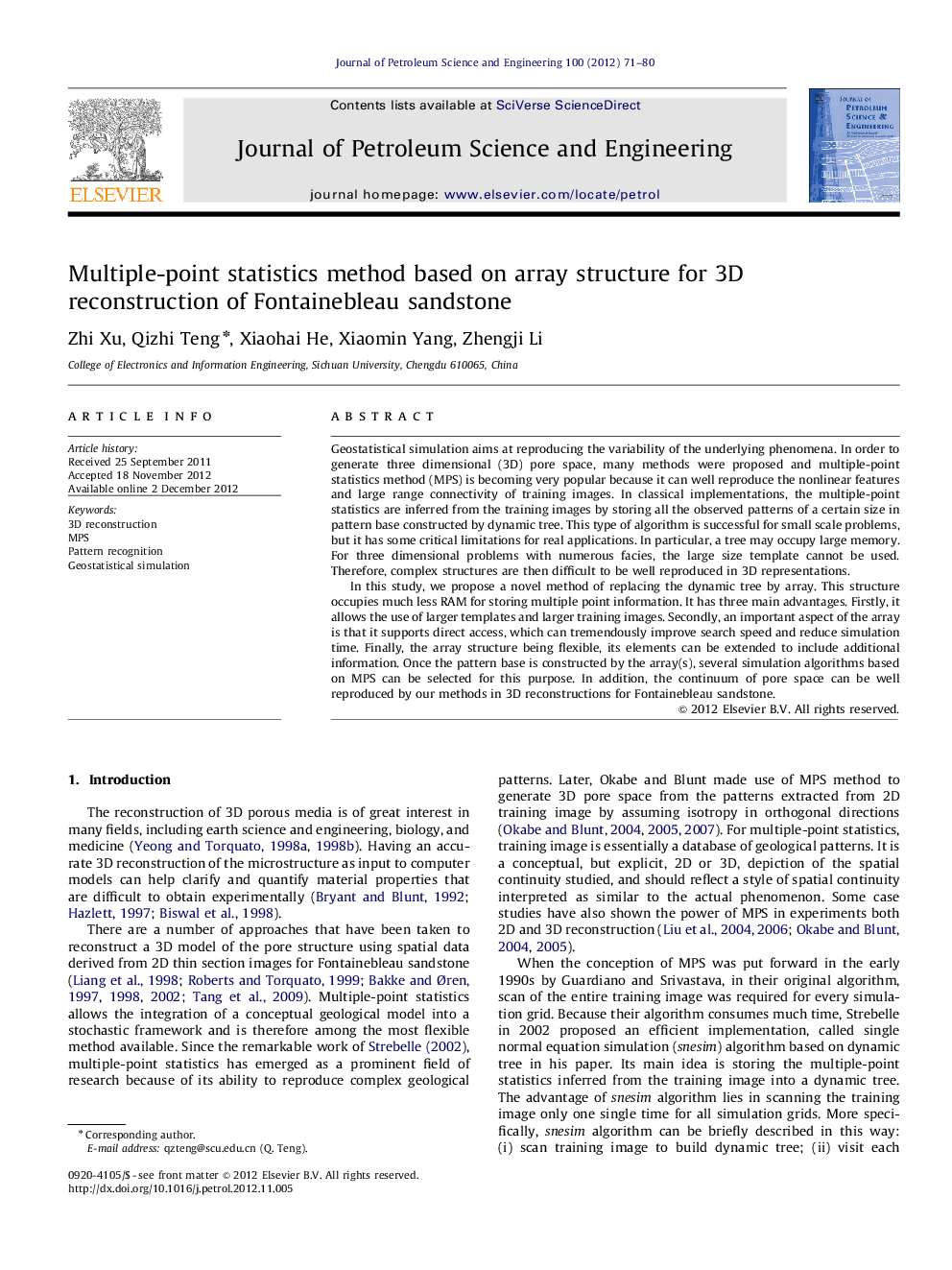| Article ID | Journal | Published Year | Pages | File Type |
|---|---|---|---|---|
| 1755357 | Journal of Petroleum Science and Engineering | 2012 | 10 Pages |
Geostatistical simulation aims at reproducing the variability of the underlying phenomena. In order to generate three dimensional (3D) pore space, many methods were proposed and multiple-point statistics method (MPS) is becoming very popular because it can well reproduce the nonlinear features and large range connectivity of training images. In classical implementations, the multiple-point statistics are inferred from the training images by storing all the observed patterns of a certain size in pattern base constructed by dynamic tree. This type of algorithm is successful for small scale problems, but it has some critical limitations for real applications. In particular, a tree may occupy large memory. For three dimensional problems with numerous facies, the large size template cannot be used. Therefore, complex structures are then difficult to be well reproduced in 3D representations.In this study, we propose a novel method of replacing the dynamic tree by array. This structure occupies much less RAM for storing multiple point information. It has three main advantages. Firstly, it allows the use of larger templates and larger training images. Secondly, an important aspect of the array is that it supports direct access, which can tremendously improve search speed and reduce simulation time. Finally, the array structure being flexible, its elements can be extended to include additional information. Once the pattern base is constructed by the array(s), several simulation algorithms based on MPS can be selected for this purpose. In addition, the continuum of pore space can be well reproduced by our methods in 3D reconstructions for Fontainebleau sandstone.
► We propose to a novel method of replacing the dynamic tree by array for MPS method. ► This structure occupies much less RAM for storing multiple point information. ► Array structure can tremendously improve the search speed and reduce simulation time. ► We can employ statistical pattern recognition or non-statistics pattern recognition method. ► Using FFT as preprocessing can speed the unconditional simulation.
